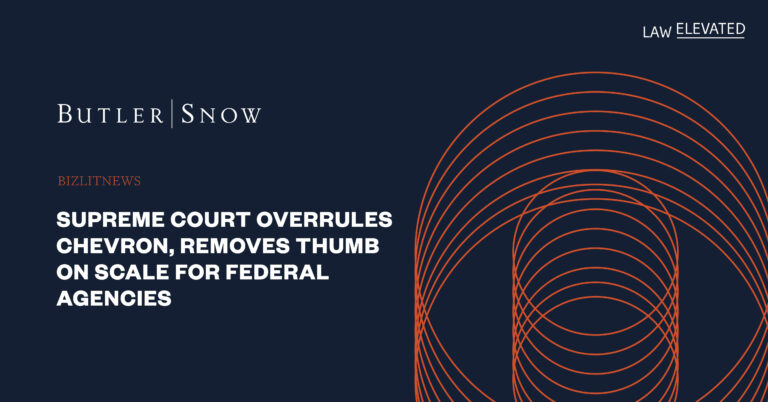In Loper Bright Enterprises v. Raimondo,[1] the U.S. Supreme Court overturned a forty-year-old precedent that placed a thumb on the scale in favor of federal agencies’ interpretations of federal laws. In doing so, it instructed lower courts to exercise their independent judgment when interpreting statutes to resolve disputes between federal agencies and regulated parties. Judicial deference to agency interpretations of law is now a thing of the past.
For decades, casebooks referred to Chevron U. S. A. Inc. v. Natural Resources Defense Council, Inc.[2] as the starting point for understanding how federal courts interpret statutes in disputes involving a federal agency’s application of federal law. Under Chevron, courts employed a two-step approach to reviewing the lawfulness of agency action. The first step was to discern “whether Congress has directly spoken to the precise question at issue.”[3] If it was clear that the agency exceeded the scope of its lawful authority as set forth in statutes passed by Congress, then the agency’s action was unlawful.[4] If the statutes were “silent or ambiguous” about the issue, however, then at step two of Chevron, the court would defer to the agency’s legal interpretation as long as it was based on a permissible construction of the law.[5]
Loper Bright held that “Chevron is overruled.”[6] The Court noted that Article III of the Constitution assigns to the federal judiciary the responsibility and power to adjudicate “Cases” and “Controversies,” and cited Chief Justice John Marshall’s famous statement in Marbury v. Madison that it is “emphatically the province and duty of the judicial department to say what the law is.”[7] Turning to the Administrative Procedure Act (APA)—the statute passed in 1946 that sets forth the procedural framework for federal agency action—the Court noted that the APA specifically authorized courts to review the lawfulness of agency action to provide “a check upon administrators whose zeal might otherwise have carried them to excesses not contemplated in legislation creating their offices.”[8] The Court concluded that judicial deference to agency interpretations of law under Chevron is inconsistent with the APA.[9]
Now, instead of deferring to agencies, federal courts must exercise their own independent judgment by using the traditional tools of statutory interpretation to decide whether an agency has acted unlawfully. After Loper Bright, federal agencies will have to provide more rigorous legal arguments in defense of their actions in court and will no longer be able to count on judicial deference. Businesses seeking to challenge the lawfulness of agency action or who find themselves subjected to potentially unlawful agency action can vindicate their rights in court without having to overcome a doctrinal presumption in favor of the agency.
[1] Supreme Court Case No. 22-451.
[2] 467 U.S. 837 (1984).
[3] Id. at 842.
[4] Id.
[5] Id. at 843.
[6] Slip Op. at 35.
[7] Slip Op. at 7–8.
[8] Slip Op. at 13 (quoting United States v. Morton Salt Co., 338 U.S. 632, 644 (1950)).
[9] Slip Op. at 35.
